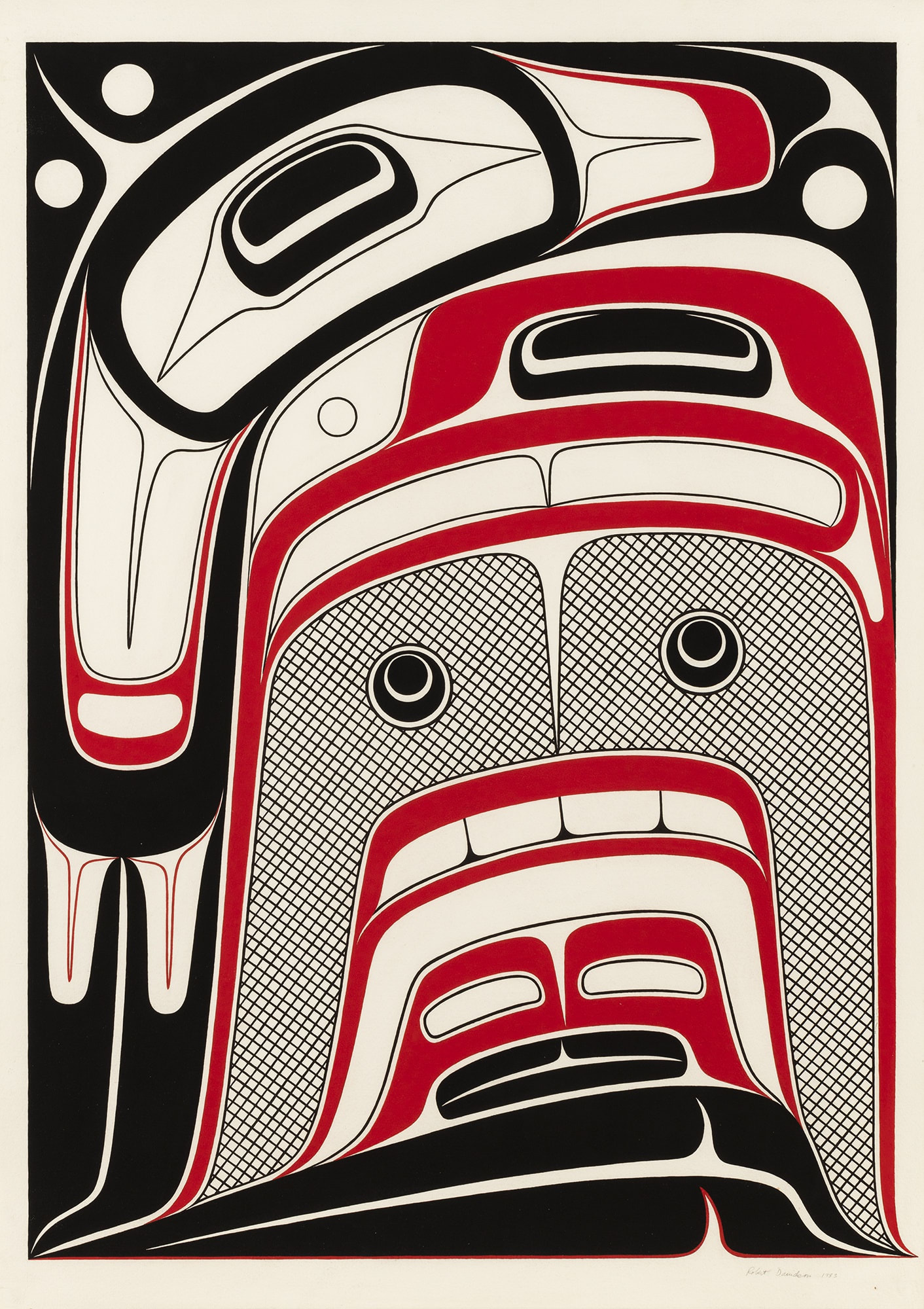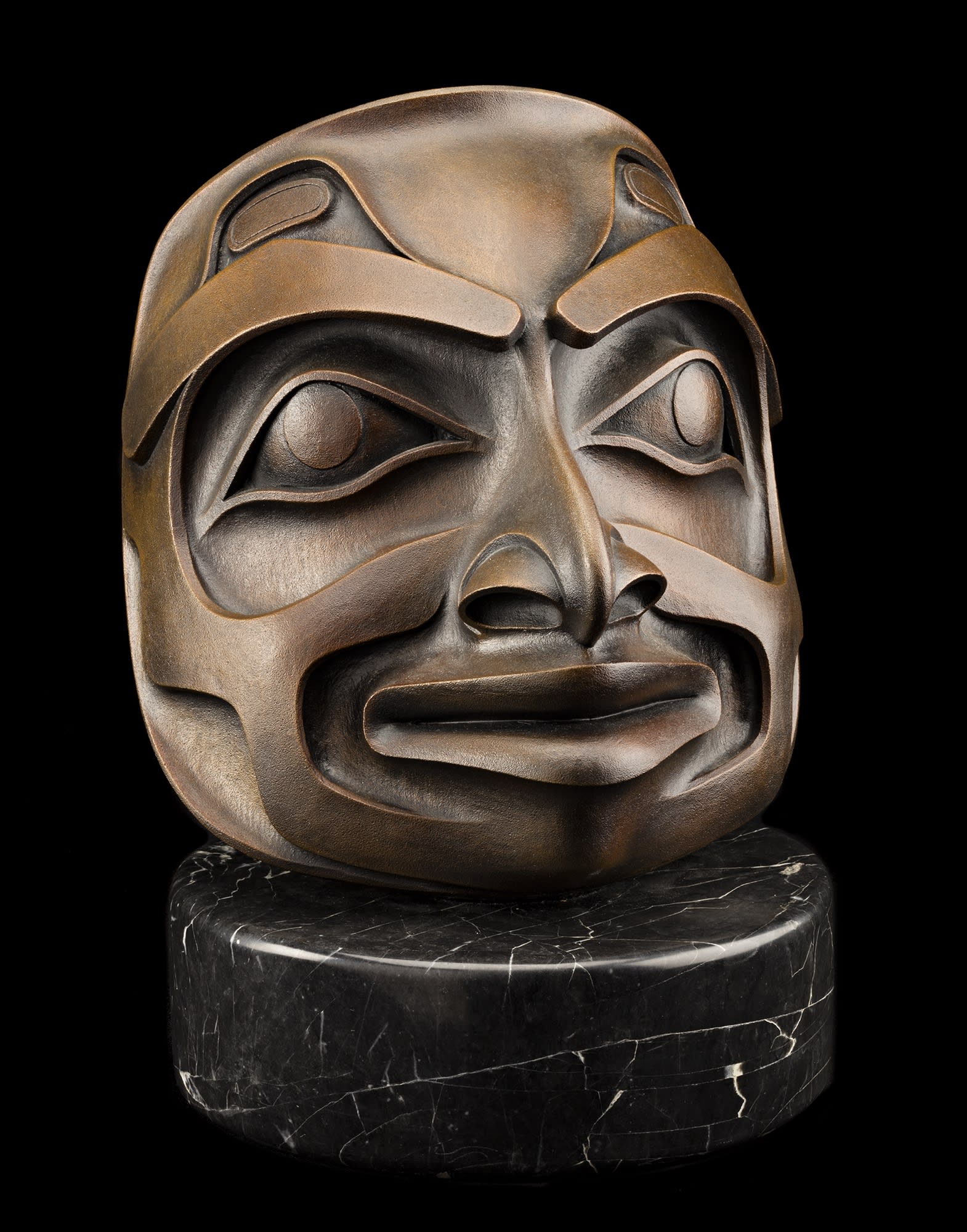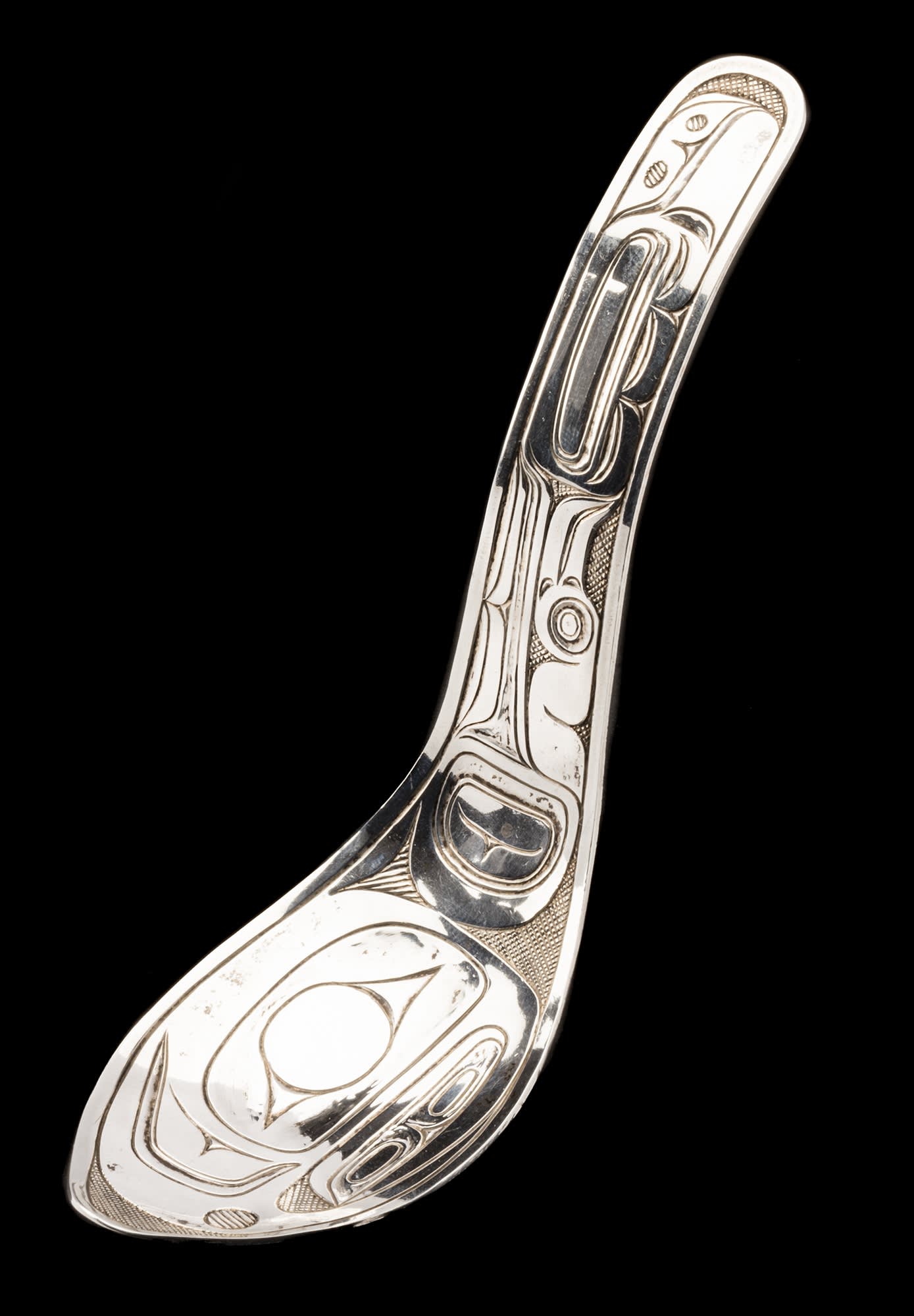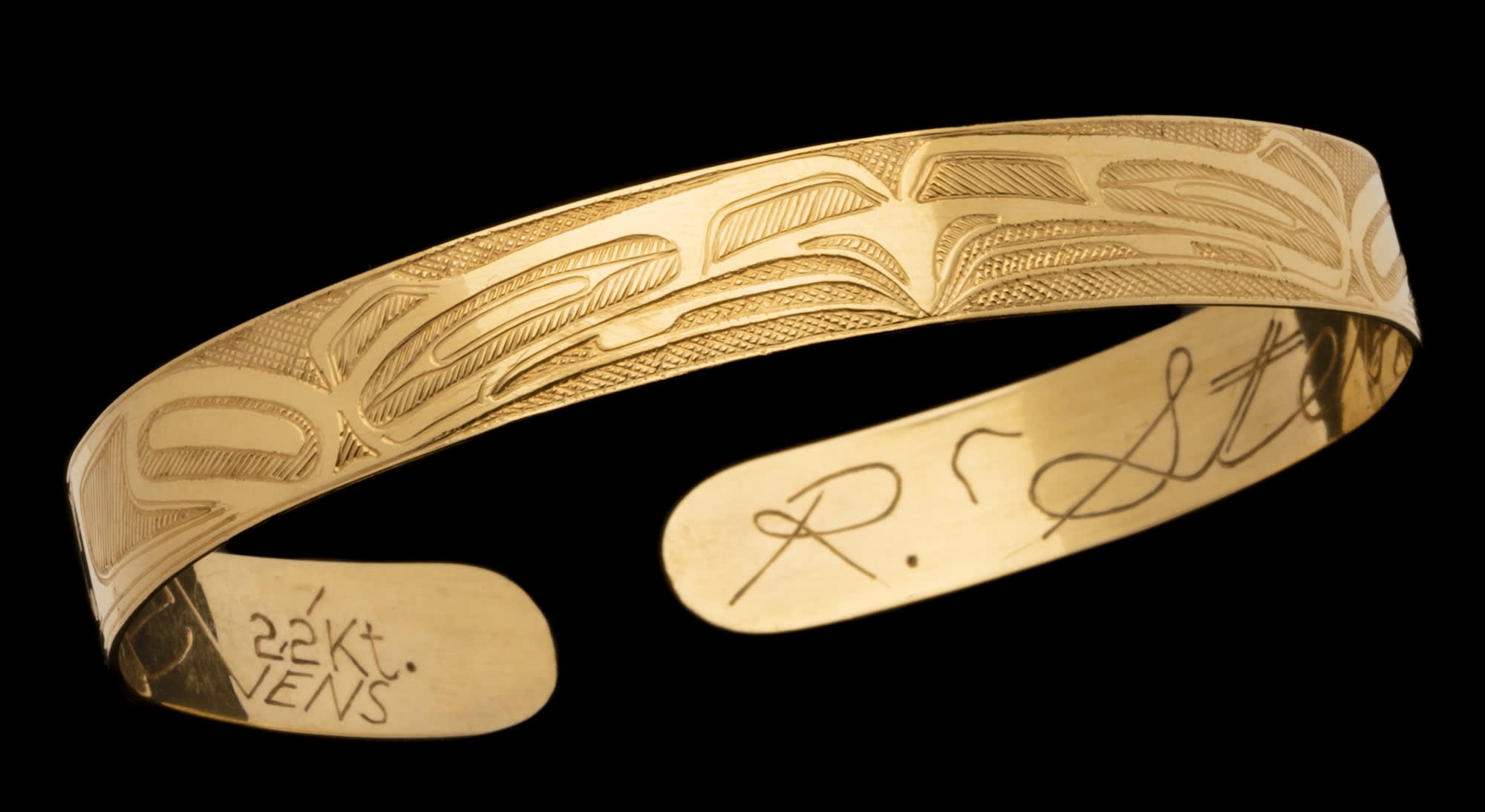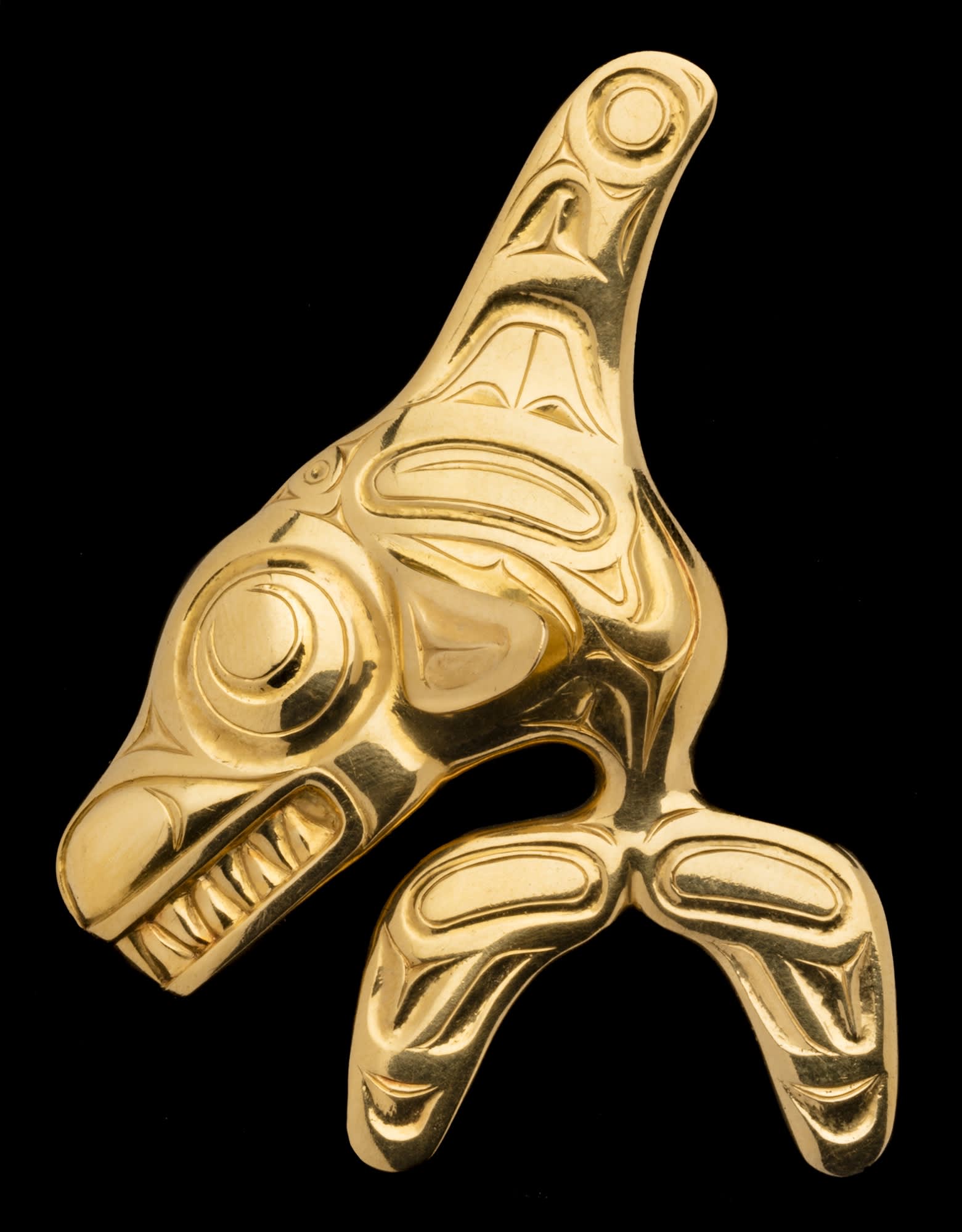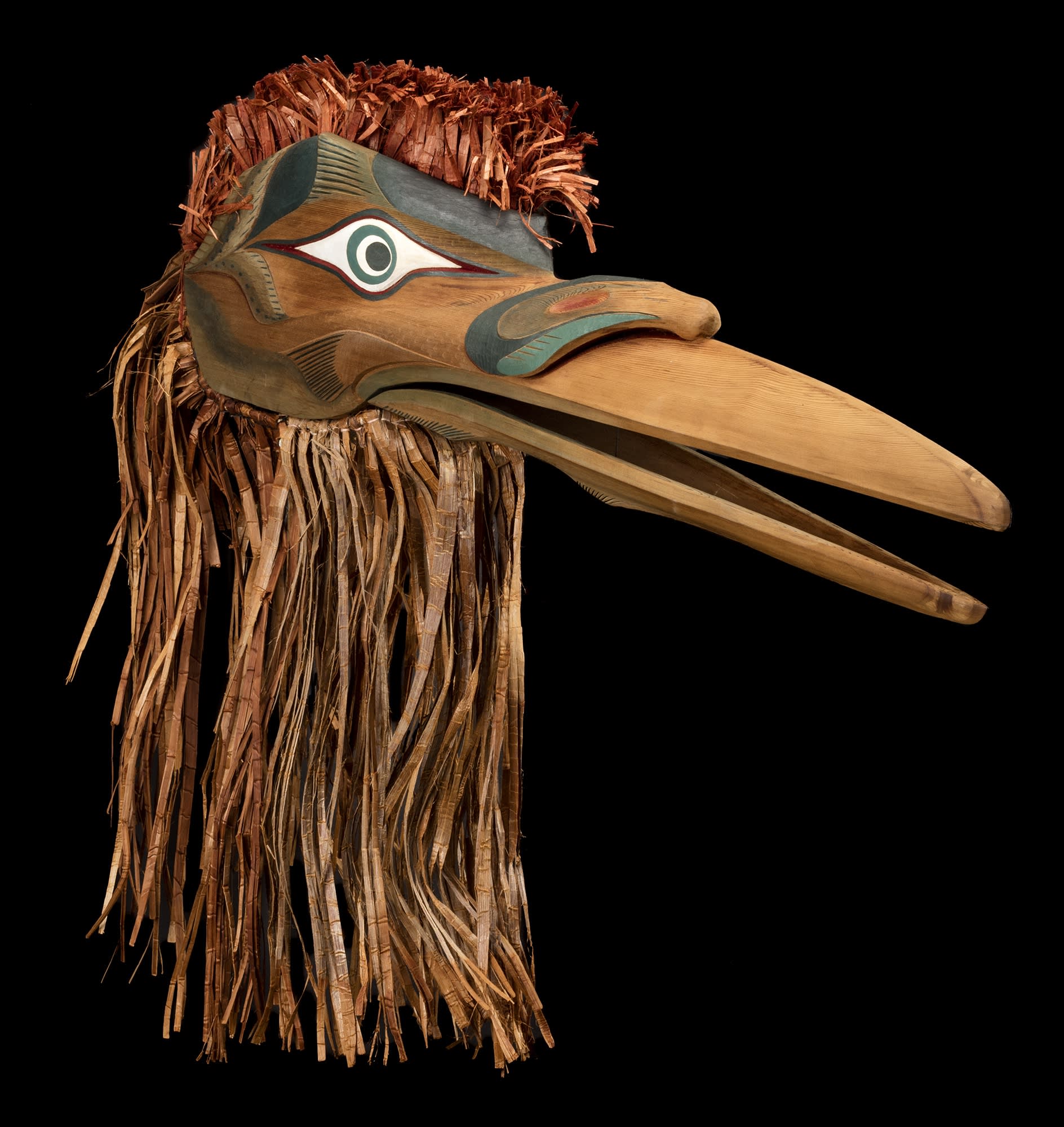The Contemporary Northwest Coast collection offered in First Arts’ Spring 2023 Live Auction spans many of the unique artistic styles of the Northwest Coast nations – Haida, Nuu-chah-nulth, Kwak-waka-wakw and Coast Salish. Most of the pieces are by artists referred to as the renaissance generation of artists who had contributed to the revitalization of the art form as well as a modern political and ceremonial system that is now stable and thriving following decades where it was threatened by extinction. The term renaissance is most aptly used to describe the recognition of these same artists by the international art world that includes awards, honours, commissions, exhibition and collector demands as well as recognition for their personal innovation and technical skills. Several of these artists are among Canada’s most decorated artists.
Most of the renaissance artists have enjoyed long careers with many beginning in the 1960 and 70s and most are still actively producing as artists. Robert Davidson is now 77, Simon Dick is 72, Mervyn Child is 68 and Floyd Joseph is 70. Bill Reid, Raymond Stevens and Art Thompson are deceased and although their careers were shortened by health issues, they were critical to the world awareness and demand for Northwest Coast art. Their work continues to have a large influence on new artists and remains in high demand from museums and private collections. Each of these artists has combined artistic excellence with personal convictions such as Robert Davidson’s support for cultural and ceremonial initiatives and Art Thompson’s public demand for justice for Residential school survivors, and collectively they have all been leaders for environmental issues facing their communities and the world.
The Robert Davidson painting U is transforming (Lot 50) is from his first exhibition dedicated to paintings and the full collection has stood the test of time, and are all considered definitive masterworks of the modern generation and establishing Davidson as a leading Canadian painter as well as a world- renowned sculptor. His pieces are rare due to high demand for major commissions that are labour intensive and finished to the most exacting standard. The spoon (Lot 87) is from a time when jewellery was consistently produced but it is now rare and often in small numbers, every few years, and only for private or family commissions. Likewise, he has not produced a bronze edition such as Eyes of the Mind (Lot 85) in many years having shifted his interest in sculptural editions to aluminum.
Raymond Stevens died in 1981 at the age of 28 and his reputation was built during the three- year period sharing a studio with Bill Reid in Montreal. Stevens returned to Vancouver as an established goldsmith producing the Split Eagle Bracelet (Lot 86) in 1978. Reid was equally prolific and innovative during his Montreal years and many of his most iconic works and jewellery commissions such as the Killer Whale Brooch (Lot 26) which was likely completed during his final year in Montreal. Pieces produced by artists such as the Sisuitl panel by Mervyn Child (Lot 113), the Green Egret by Simon Dick (Lot 114), Sun Mask by Art Thompson (Lot 115), and the Wolf House Post by Floyd Joseph (Lot 89), are examples of artists who are dedicated to their cultural style and they will prioritize requests for ceremonial and cultural commissions over market demand.
Lot 50
ROBERT DAVIDSON
U is Transforming, 1983
ESTIMATE: $70,000 — $90,000
Exhibited
Adding More Words to the Dictionary: In Appreciation of Robert Davidson’s most recent paintings, Maple Ridge Art Gallery, Maple Ridge, B.C., 1983.
Exhibited and Published:
Inuit Gallery of Vancouver, Robert Davidson: An Exhibition of Northwest Coast Native Art, 13 April - 4 May 1989, illustrated catalogue;
Vancouver Art Gallery and the Canadian Museum of Civilization, Robert Davidson: Eagle of the Dawn, 1993-94. Catalogue: Ian Thom, ed., Robert Davidson: Eagle of the Dawn (Vancouver: Vancouver Art Gallery, 1993), p. 105. This was the first major public exhibition of Davidson’s work; the book remains the definitive study of the artist’s work and career to that point.
Published
Gary Wyatt with Robert Davidson, Echoes of the Supernatural: The Graphic Art of Robert Davidson, (Vancouver: Figure 1 Publishing Inc., 2023), p. 100, as “U is Transforming I” to differentiate it from the second painting of the same title by Davidson.
U is Transforming was shown at the first major exhibition of Davidson’s paintings, and springs from a highly experimental and creative period that would establish a new direction and medium for the artist.
In the years building towards the 1967 landmark exhibition Arts of the Raven at the Vancouver Art Gallery, Robert Davidson was introduced to the work of a historical anonymous master artist whom Bill Holm and Bill Reid had named the ‘Master of the Black Field.” This artist would become an early influence on Davidson’s work – the Master’s ability to establish a shape within a shape and then design both the primary and internal designs in relation to each other was a critical influence on pieces throughout Davidson’s career. Davidson believes that each shape has its own supernatural and natural presence that can be brought to life.
In 1983 Davidson began painting as a serious medium; this led to an important early exhibition titled Adding More Words to the Dictionary – In Appreciation of Robert Davidson’s most recent paintings at the Maple Ridge Art Gallery. U is Transforming was included in this exhibition. Many of these paintings featured large formline elements within a shape which became the external form for the subject – titles such as Wolf Inside Its Own Foot, Seawolf Inside Its Own Dorsal Fin, and U is Transforming were strong examples of his new direction in designing. Five of these paintings were all sold as a set; this was Davidson’s first major painting sale, and it shifted his work towards producing original paintings. These same five paintings became the designs for a 1983 print series; these are among the most collected and documented images of the modern art form.
U is Transforming was released for sale in the 1989 catalogued solo exhibition Robert Davidson at the Inuit Gallery of Vancouver. This exhibition was one of the first exhibitions to experiment with not pre-selling the exhibition; all major works were sold to people who formed a line in front of the gallery. The clients travelled from many international cities to participate in the sale and the ceremonial opening with the artist. Davidson has included paintings in every major commercial and retrospective exhibition since that time.
Gary Wyatt
ROBERT DAVIDSON
Eyes of the Mind, 1996
ESTIMATE: $15,000 — $25,000
When I realized that my spirit has a helper, I started to wonder if my mind has eyes.
(Robert Davidson’s description of this work, 1996)
Robert Davidson (Guud Sans Glans) began working in bronze as a possible medium for public art commissions in the mid 1980s. While visiting the site that would become a commission for three totem poles titled Three Variations of the Killer Whale Myth at the Donald M. Kendell Sculpture Garden, Pepsico World Headquarters in Purchase, New York, Davidson carried a wooden frog medallion in his pocket, which he famously described as squirming and trying to leap into the pond in front of the poles. This led to a commission for a three-foot bronze casting in which the “medallion” floats just above the surface of the pond. Davidson decided to experiment with smaller bronze editions to maintain market presence during a decade in which his work was in extremely high demand. He would leave bronze as a medium in favour of hollow aluminum sculptures, which he could adjust in scale from tabletop to monumental works that could withstand Canadian winters in public spaces.
Lot 87
ROBERT DAVIDSON
Spoon, c. 1976
ESTIMATE: $7,000 — $10,000
Robert Davidson credits spoons as being an important transition in his carving style from symmetrical to asymmetrical forms. Bracelets and pendants were often split forms mirrored from the centre, but spoons required asymmetrical designs to fit their shape. Davidson became interested in the design possibilities of asymmetry and began to experiment in asymmetrical designs on bracelets; this quickly elevated his designs and carving style to a new level. He would apply this same technique to printmaking, using templates from designs on spoons, pendants, and bracelets to create new print designs. Davidson will still occasionally reacquaint his hands with the jewellery tools and produce a small series of pieces for family or special clients, but this has become very rare in recent years due to the demand for sculptural works and paintings. During the 1970s when this spoon was created, the demand was quite high for jewellery commissions.
Gary Wyatt
Lot 86
RAYMOND STEVENS
Split Eagle Bracelet, 1978
ESTIMATE: $4,000 — $6,000
Raymond Stevens was born in 1953 in Prince Rupert, raised in Skidegate on Haida Gwaii, and schooled in North Vancouver. In 1955, he was adopted by master carver Bill Reid and Mabel Stevens, but he would return to Haida Gwaii where he studied argillite carving with Rufus Moody and later with his stepfather Billy Stevens. After studying goldsmithing at the Central School of Design in London, England, Bill Reid set up a studio in Montreal where he would remain for three years. Raymond joined Reid in Montreal, and learning from him, began to seriously carve jewellery. He found a strong market for his work, and even received government commissions. Stevens was a skilled craftsman and sought to replicate the tight crosshatching used by Haida masters such as Charles Edenshaw. This Split Eagle, with an elongated beak and feather details, features his skill in tight cross-hatching on a narrow bracelet. Stevens enjoyed playing with designs on the insides of bracelets; these included doodle-like drawings such as the charming ones he included here, along with his signature. His work is included in the collections of the UBC Museum of Anthropology and was featured in the 2006 exhibition Raven Travelling: Two Centuries of Haida Art at the Vancouver Art Gallery. Stevens died tragically in 1981.
Gary Wyatt
Lot 26
BILL REID (IIJUWAS)
Killer Whale Brooch, 1972
ESTIMATE: $25,000 — $35,000
Iijuwas, Bill Reid, was born in Victoria, B.C. in 1920. In the late 1940s he began to pursue his personal interest in jewellery with courses at Ryerson Institute of Technology while working as an announcer for CBC Radio in Toronto. At the same time, he was exposed to Haida masterworks in Toronto museums which altered his artistic direction. In 1963 he established a studio in Gastown back in Vancouver, after several years working on monumental projects, to devote time to creating Haida pieces in precious metals. It was during this time that he would produce some of the definitive masterworks of Haida art. Several of these pieces were exhibited at the two major showcases for Northwest Coast art in the 1960s: the Canadian Pavilion at Expo ’67 in Montreal, and the exhibition Arts of the Raven at the Vancouver Art Gallery. In 1968, Reid received a Canada Council grant that allowed him to study goldsmithing at the Central School of Design in London, England, where he learned to add new techniques to Haida and contemporary jewellery pieces. Following his time in London, he established a studio in Montreal where he could quietly pursue his career as an artist; there he carved the boxwood sculpture Raven and the First Men which would become the maquette for the famous seven-foot monumental sculpture for the new UBC Museum of Anthropology. He continued to produce pieces in argillite, wood, and ivory.
Reid was interested in Haida mythology, which he related in compelling stories, and which formed the basis of numerous multi-figured sculptures, drawings, and jewellery pieces. The Killer Whale appears in several myth-based pieces, particularly the story of Nanasimeget and his wife. He also carved the Killer Whale as a solitary figure such as with the Killer Whale Brooch, the monumental Killer Whale for the Vancouver Aquarium, and a sculpted box with an arching killer whale handle in 1971. All three works capture the whale in a similar position, with an exaggerated and heavily designed dorsal fin, an arched back, and riding on its back flukes as it leaves the water. This 1972 Killer Whale Brooch was in a stated edition of ten, but only three were ever cast, hand carved, and finished. The first of the three was gifted by Prime Minister Trudeau to his wife, Margaret.
Gary Wyatt
MERVYN CHILD HUNT
Kwagu'ł Sisiuł, 2002
ESTIMATE: $4,000 — $6,000
Mervyn Childs continues to live in his home village of T’sakis / Fort Rupert and to work in the Copper Maker Studio and gallery created by his uncle, Calvin Hunt. He is an active cultural performer, teacher, and artist.
The Sisuitl was often depicted in large panels installed in ceremonial longhouses. This supernatural creature had two heads with a central human form, with supernatural horns flanked by human hands, representing the possession of the supernatural power held by the Sisuitl. The Sisuitl is often associated with power crossing from the natural to the human world, with the ability to protect and heal, and it is therefore associated with shamanic rituals.
Gary Wyatt
SIMON DICK (TANIS)
Green Egret Headdress, 1998
ESTIMATE: $3,500 — $5,000
Tanis, Simon Dick was born in Alert Bay in 1951 and raised in Kingcome Inlet. He was raised speaking the Kwakwaka’wakw language and participating in ceremonies as an artist and dancer. His contemporary style is a mix of washes and bleeds of colour blended with traditional formline, which he credits to his observations as a dancer and observer of masks seen by firelight. He is also interested in birds, which are less documented in traditional stories. This has offered him artistic licence to capture their plumage and colour in masks. He often uses feathers as well cedar bark to dress his masks and headdresses. Simon Dick has travelled to the Amazon rainforest with the musician Sting as an artist and activist, supporting protection and awareness of rainforest destruction. He was commissioned to construct the massive Thunderbird canopy for the public amphitheatre at the Canadian Pavilion at Expo ‘86 in Vancouver.
Gary Wyatt
ART THOMPSON (Tsa-qua-sup)
Sun Mask, September 1995
ESTIMATE: $7,000 — $10,000
Tsa-qua-sup, Art Thompson is a Ditidaht Nuu-chah-nulth artist from the village of Whyac on Nitinat Lake on the west coast of Vancouver Island. His childhood was interrupted with hospitalization for tuberculosis followed by forced enrollment in residential school, where he was severely abused. He would later become a prominent spokesperson for justice for residential school survivors. Despite years away from home, he was influenced by the cultural teachings of his grandfather, and at fourteen he was initiated into the high ranking Tlukwana Wolf Society. Thompson became a logger at a young age but was injured by a falling tree, which forced him to revalue his future. He enrolled at Camosun College in Victoria, and later at the Emily Carr Institute in Vancouver to study printmaking and sculpture. Thompson had an early understanding of Nuu-chah-nulth forms, and he was a natural born designer. His series of prints produced early in his career, now referred to as the “Seafood Series,” are among the most collected Northwest Coast prints. Together with the prints of Joe David, Ron Hamilton, and Tim Paul, they established a powerful presence in the art market, defined new directions for Nuu-chah-nulth art, and found an enthusiastic collector base. Art Thompson would create a legacy for innovative graphics and sculpture including masks, totem poles, rattles, and puppets. His fluid designs rendered in precise, sharp lines, continue to influence the styles of emerging artists. In 1995 Thompson was chosen to carve a totem pole for Stanford University to commemorate the first indigenous graduate from that university. He died in 2003 at the age of fifty-six, after several years of battling cancer.
This Sun Mask features two flanking wolves and an eagle painted on the forehead. Large-scale Sun Masks were frequently handheld above a screen. The mask is dressed with copper, horsehair, metal tacks, and mirrors which capture the reflective light of the sun.
Gary Wyatt

Floyd Joseph Tyee
Salish Wolf Spirit House Post, 1990
ESTIMATE: $8,000 — $12,000
In 1990, the Marion Scott Gallery hosted a solo catalogued exhibition titled Tyee for Coast Salish artist Floyd Joseph. This exhibition highlighted the unique style of this artist, with bold colours and contemporary interpretations of a wide range of subjects by a modern artist. Floyd Joseph was born in Capilano, North Vancouver, in 1951 and he is a hereditary chief for the Squamish nation and a full-time artist. The design is based on classic Salish houseposts and depicts a wolf and female form. The catalogue inscription quotes Tyee as saying that the pole represents family unity and the power to transform.
Gary Wyatt

